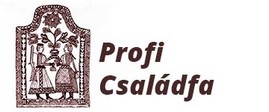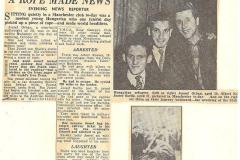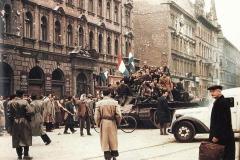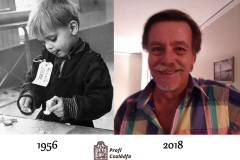ENGLISH
Family research and related search in Hungary and in all countries of the Carpathian Basin: Transylvania (Romania), Upper Hungary (Slovakia), Burgenland (Austria), Croatia and Carpathian Ruthenia (Ukraine).
Please, follow me on Facebook or send me an E-mail to info@proficsaladfa.hu.
We come across some faded old photos, with unknown faces looking back at us. In family conversations, we hear legends from grandmother, “gran-gran”, no one knows whether the legends are based on facts or just tales.
For most of us, this is our only heritage of the past, some morsels about our ancestors. The history of our country combines diverse human destinies, so many people do not know how to mend the broken threads, how to go about rediscovering the forgotten family past.
Welcome to my website. First, let me introduce myself: I am László Mlecsenkov a family researcher. I was born in Budapest on May 27, 1977. I graduated from Eötvös Loránd University, Faculty of Humanities and Law. For eight years now, I have been a family researcher. It started as a hobby, which gradually became a vocation in both the noble and professional sense of the word.
Originally my passion focused on my own family and then gradually, through recommendations I became an enthusiastic family researcher; someone who unveils decorative yet valuable details.
My professional experience and thorough knowledge of research sites (personal archives, libraries, archives of documents etc.) across the Carpathian Basin allow me to encompass the full spectrum of family history.
My family research firm is also committed to respecting the personal data and privacy rights of our prospective and former customers as well.
I am looking forward to working with you.
The troubled centuries of Hungarian history forced many of our fellow countrymen to seek opportunities elsewhere. It is fair to say that wherever they ended up they strengthened the good reputation of Hungary. There is almost no country on our planet where we couldn’t meet the members of our nation.
No wonder, since just after the 1956 Revolution and War of Independence, some 250,000 compatriots left Hungary. Prior to this, The Revolution and War of Independence in 1848-1849. opened the gates of migration thus forming many smaller or larger diaspores of Hungarians across the globe from America to Australia. One of the symbols of this flow is the Ellis Island immigrant station of New York.
Their descendants may rightly be proud of their ancestors’ resilience and the fact that their family prosperity is based on their hard work: they had to settle in a new country, learn a new language, restart their lives completely anew. Often, hopelessness and the repression of oppressive power forced these people to turn their backs to their previous lives, often leaving their families and their homelands for the unknown.
Finally, allow me to give you two examples of the beauty and importance of my profession.
To celebrate our national holiday of the uprising on October 23, 1956, I uploaded to my company’s Facebook profile a photo of a little Hungarian boy playing with plasticine in December 1956. The picture was made in a refugee camp in Traiskirchen (Austria).
Since his name was clearly legible on his clothes, I started to investigate. It turned out that István Hocsák was born in Csepel on February 26, 1954. With her parents and grandmother, they migrated to North Carolina, where he now lives with his family. He was very grateful for the picture I sent him.
His parents taught him to speak, write and read in their mother tongue. This allowed us to communicate in Hungarian after the initial contact which was in English.
Of course, he contributed to the disclosure of his data and photo.
During my research, I discovered an English newspaper article. The photo shown here depicts the Hungarian young people who pulled down the hated statue of Stalin in Budapest.
Albert Kovács in his early twenties and his associates in the last days of the war of independence, sent a desperate emergency message from Sztálinváros (today: Dunaújváros) to the Western powers with a Rákóczi transmitter located on a moving truck’s platform. Albert Kovács fearing retaliations after the crushing of the revolution, fleed abroad. He now lives in Canada, British Columbia, with his wife Mirjam. It was a great pleasure for me to contact him and we had very lively conversations about the events of 1956 and their life afterwards. Heroes often live among us inconspicuously!
I need to point out that every tiny piece of data and even uncertain information may be crucial for starting and continuing research.
Our questionnaire is available for download here.( Please return the completed form to me.) It is very important to keep in mind that all data shreds can be relevant, but you only need to complete lines where there is some information available.
The completed questionnaire should be sent back to the e-mail address provided on the website to prepare the free research plan and quote.
The purpose of family research can be diverse. Starting from the ancestral tree containing all straight-line blood ancestors, through research focusing exclusively on the naming branch, to so-called population research regarding the family name.
Obviously, the Client’s prerogative is to determine the process and purpose of ancestry research. The latter is determined by several individual aspects. Of course, straight-line ancestries which lead back to the beginning of first registries are usually required by our clients.
THE FAMILY RESEARCH PROCESS
If our Customer accepts the research plan and the quote, the one to six months long process of family research will begin.
The results of family history are summarized in our Family Package, which includes:
- Printed and digital versions of the family tree.
- Family and local history study.
- Maps and photos.
- List of found birth certificates (births, marriages).
- A digital version of all these on DVD.
Due to the turbulent history of our country, many families have a part or all of their roots beyond our borders: Slovakia, Transcarpathia, Croatia, or Austria. We also undertake family history research in these areas based on prior consultation.
SERVICES INCLUDED
- Free personal consultation and quotations.
- Finding and photographing family memorials, former dwellings of the ancestors, and tombs.
- Family history research in the area of historical Hungary based on civil and church records, census and other written archival sources.
- Producing family trees, descendants, coats of arms, and family history albums, even in exclusive designs if requested.
- Finding and documenting and photographing family memorials, former dwellings of the ancestors, tombs.
SOURCES OF FAMILY RESEARCH
Oral Tradition: Particularly important in the research of civilian, peasant and labor genealogy. This includes the so-called. “Family oral history” that has been preserved from generation to generation. This resource is very limited: it can only extend to grandparents or great-grandparents.
Archival source material: primarily lists of church and state registers, censuses, address books, name lists, military repositories, civic registers, guild registries.
Other written source material: CVs, narrative sources, school bulletins, family bibles, workbooks, medical and land registry documents, etc.
Printed Resources: Typically, this is a modern-day source group, (eg. birth, baptism, marriage certificates, obituaries, invitations, business cards).
Epigraphic Memories: Inscriptions on Buildings (e.g.: Memorials, Reliefs, Building Notes)
Funeral Memories: Tombs, Tombstones.
Iconographic Memories: Paintings, Graphics, Portraits, Photos.



